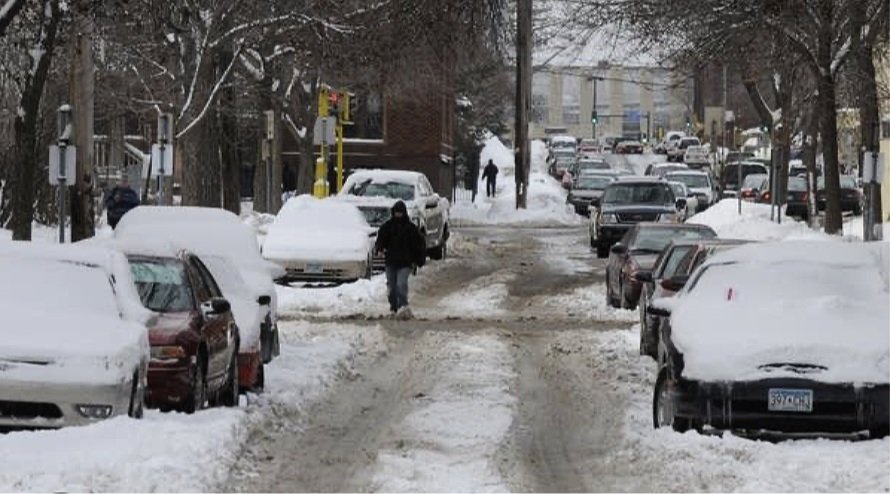
Parking Shortages
While planning a new arena bringing thousands of people per event, The University of St. Thomas does not plan to add any parking. Rather, UST will actually decrease its available parking by 265 spaces on top of the 127 spaces eliminated to build Schoenecker Hall. Where will people park?
St. Thomas has presented no plan — at all — to accommodate all of its parking needs on campus. In fact, there is no evidence that UST ever intends to satisfy its own parking demand. For more than fifty years, the cars of faculty and staff have been parked on neighborhood streets around campus, leading to a shortage of on-street parking for the people who live there. The response has been an ever-expanding ring of permit-parking zones; each time a new zone is created, UST vehicles simply park in the next-nearest neighborhood without parking restrictions.
The residential streets nearest to campus require permits 24/7, but most streets have restrictions that match the campus’s classroom times: 8am to 8pm, M-F. The arena presents a non-academic schedule: 7 pm games, with additional games on weekend afternoons. UST’s parking diagrams indicate that it anticipates using these 8am-8pm zones for parking at peak events, which include Thursday men’s basketball games. Many of the parking spaces that St. Thomas plans to utilize for peak events lie in 8am-8pm restricted zones. Obviously, this would require illegal parking from 7 pm to 8 pm on weekdays.
Furthermore, only 2,600 University of St. Thomas students live on campus, yet UST asserts that 1,200 students will attend basketball games. Even while overstating student attendance, UST projects that a full basketball arena will force 3,055 attendees to park on neighborhood streets. Using federal and MNDOT figures for vehicle occupancy, that means UST’s demand for parking spaces will be 1,797 vehicles short of its supply.
St. Thomas relies on 1,797 parking spaces being available in the neighborhood, but its assumptions ignore factors that limit parking available for spectators, such as:
Other events on the South Campus, including evening classes and events at the performance spaces in Schoenecker Hall (capacity 250).
Events on the North Campus, including evening classes and events at the Woulfe Alumni Hall (capacity 900).
Parking spaces occupied by food/beer vendors, ticket takers, security, ushers, referees, maintenance workers, and other support personnel.
Permit parking restrictions that prohibit on-street parking M-F 8am-8pm, meaning these streets cannot (legally) be utilized by UST spectators for weekday games. Some blocks require permits 24/7, and others are petitioning to join them due to the arena proposal.
Events in the neighborhood that, by necessity, would begin well before game time so that parking is still possible.
Parking restrictions caused by snow. In winter 2023, parking was reduced to one side of the street for weeks.
Fees that UST charges for parking will drive spectators to the streets in search of free parking.
Some on-campus parking lots that UST plans to utilize are far from the arena and will sit empty until the nearby streets are completely full.
The University of St. Thomas dismisses the effect on a neighborhood when large crowds park on the streets. Alone, one vehicle parking can cause a disturbance with closing doors, beeping alarms, and loud conversation. Crowds attending sporting events magnify those disturbances, with people in the crowd disregarding the presence of the houses they pass. Because the arena will serve alcohol, the noise level will be louder and the behavior will be more disturbing. UST wholeheartedly intends to garner maximum crowds for exciting events, and then to release the crowds into the residential neighborhood each night. If UST cannot contain its own crowds, it should not build an arena.
Simply put, the University of St. Thomas has no plans to meet the arena’s parking demand other than to thrust the burden of providing parking onto the residential streets that surround campus. Every winter evening, neighbors will be unable to park near their homes, with the impact disproportionately felt by renters and the elderly, particularly those closest to campus where even the smallest arena events will clog the streets with attendees. An arena of this size may only be built where there is capacity on-site to handle the large parking demand it generates.
